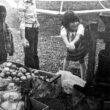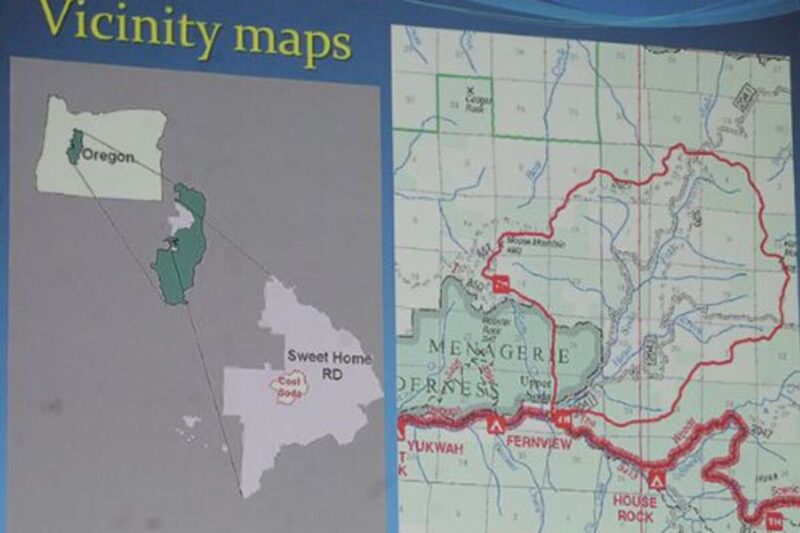Sean C. Morgan
After a second meeting held June 14 to solicit input into a management plan for the Cool Soda planning area, the U.S. Forest Service will begin developing a proposal.
In May, the Forest Service discussed the inherent capabilities of the land. Last week, it looked at the existing conditions.
“What we were working on was trying to understand the existing resources,” said Karen Bennett, regional soil scientist with the Pacific Northwest Region based in Portland. That includes everything from vegetation to hydrology, soils and wildlife.
Among notable findings, the Cool Soda planning area, the Soda Fork watershed, includes a new species of slug discovered by a local Forest Service biologist. The forest is reversed from historic patterns, with the oldest parts on the south side and younger forests at higher elevations in the east, north and west. Stream temperatures in the Soda Fork are lower than other streams, such as Sheep Creek, providing opportunities for fish habitat and spawning. No spotted owl pairs are inside the watershed, but two peregrine falcon pairs are located in or near the boundary. The area also has a 70-foot waterfall.
The planning area is called Cool Soda because Cool Camp is located on the northern edge of the watershed. Approximately 65 percent of it is owned by private interests, the majority by Hill Timber and managed by Cascade Timber Consulting. Gustina owns a small amount of forest land. The remaining 35 percent is owned by the Forest Service.
The Forest Service is partnering with CTC and the South Santiam Watershed Council to develop the plan.
To get there, they are attempting to understand how the land has been impacted by roads and other human factors, Bennett said. The first step was to understand its inherent capability to produce resources. The second is to see how human interaction has affected the landscape.
The next step is to understand the outcomes the planning team hopes to achieve, she said. That’s based on the values provided by those participating in the process, although those outcomes must be within existing legal constraints.
“Within that, I think we have some choices working within the landscape and how we get there,” Bennett said. On Aug. 7, the team will begin developing priorities based on the input.
Those attending the meeting ranked their values on a matrix of values, but the results had not yet been tabulated at the end of the week.
As an example of what the Forest Service is attempting to achieve, timber harvest and fish habitat may both be desired outcomes.
“Where can we best accomplish the forest products objective without impacting fisheries or water resources, for example,” Bennett said. The team will figure out the best places for harvest and on what time frame. Some areas may be more productive than others, with shorter timber rotations.
“I’m really looking forward to the outcome of the process,” Bennett said. What’s different is working together with private landowners and the community to develop the proposal.
Usually, the Forest Service develops a proposed action, and people react to it in a comment period.
When this plan is actually proposed in September it will go through the same National Environmental Policy Act process as other actions, Bennett said, but now is the public’s opportunity to give input and shape the action that will be proposed.
The next meeting is scheduled for Aug. 7. Times will be announced.





